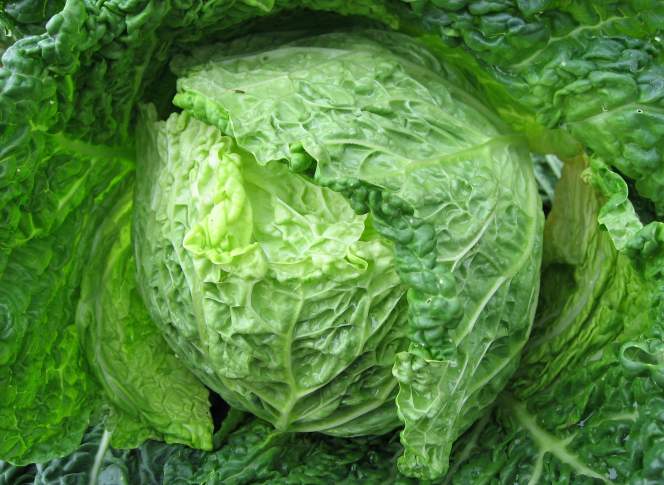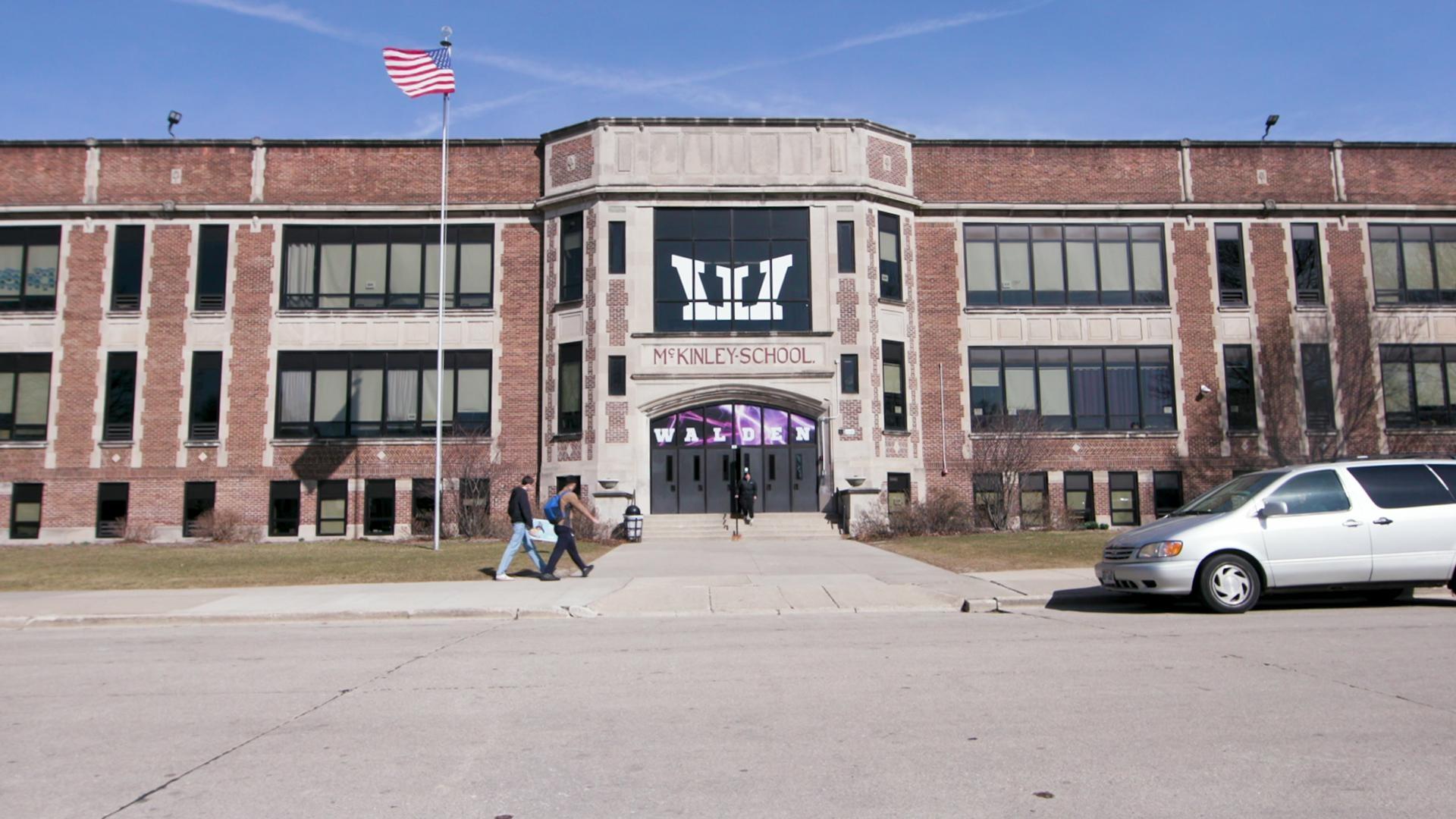Produce Farmers Place New Emphasis On Food Safety
Farmers who follow food safety best practices produce better quality produce that last longer on the market and in consumers' kitchens. The harvest, storage and handling processes intended to minimize pathogens that cause illness in humans also target the organisms that cause produce to decay.
March 3, 2017

Head of cabbage

Farmers who follow food safety best practices produce better quality produce that last longer on the market and in consumers’ kitchens. The harvest, storage and handling processes intended to minimize pathogens that cause illness in humans also target the organisms that cause produce to decay.
An emphasis on food safety practices at the farm level is growing. University of Wisconsin-Extension organic agriculture specialist Erin Silva discussed these practices and new federal regulations in a Nov. 12, 2015, lecture recorded for Wisconsin Public Television’s University Place.
Farmers don’t want their customers to get sick, and they don’t want to be liable should a foodborne illness break out, Silva said. Meanwhile, growing competition means wholesalers are asking farmers for written food safety plans before allowing them access to produce auctions or grocery stores.
A food safety plan encompasses a farm’s practices to ensure its products are safe and the presence of pathogens is minimized, said Silva, who is a professor in the Department of Plant Pathology at UW-Madison. Farmers choose to devise these plans, which do not involve anyone inspecting their operations. Food buyers may have a plan template they want farmers to follow, though. The documentation buyers may request can take several forms, she said, including third-party audits.
A third-party audit does involve someone coming to a farm to review its food safety plan and the practices it outlines, Silva said. Most farms pay for such an audit only when a buyer requires it.
“If farm[er]s are wanting to sell their produce to those specific buyers, they do need to be very diligent and very deliberate about establishing food safety plans and addressing food safety on their farm[s],” she said.
Farmers care about the public perception of their foods and about specific consumer sectors such as farmers’ markets and institutional purchasers, Silva explained. The public is aware of foodborne illness outbreaks that can be traced to produce, which could be especially problematic for farms that sell directly through farmers’ markets or community-supported agriculture systems.
The federal government has new sets of rules for produce food safety that the U.S. Food and Drug Administration crafted under the Food Safety Modernization Act. Since it was passed in 2011, this law’s requirements have gradually been defined and implemented, but they remain subject to changing federal priorities.
Key facts
- About 48 million people get sick from foodborne illness every year in the U.S. About 9 million of these illnesses are caused by major pathogens. Produce accounts for about 46 percent of those illnesses, many acquired from eating leafy green or vine-stalk vegetables, including tomatoes, cantaloupe and melons. Twenty-three percent of deaths from foodborne illness are due to produce.
- The Centers for Disease Control and Prevention tracks outbreaks of foodborne illness. For example, a 2011 outbreak of listeriosis linked to cantaloupe grown in Colorado caused 147 illnesses and 33 deaths. A 2006 outbreak of E. coli from spinach, which caused 276 illnesses and three deaths, including one in Wisconsin, prompted wide-ranging changes in how the U.S. deals with produce food safety. In 2014, Salmonella-tainted cucumbers caused an outbreak that led to 275 illnesses and one death.
- People with immunodeficiencies are more susceptible to foodborne illness. More people have compromised immune systems than in the past due to cancer; chronic diseases such as kidney failure, diabetes and cirrhosis; medications; and other reasons.
- The Food Safety Modernization Act affects the majority of U.S. farms that grow and sell vegetable crops. Very small farms have until 2018 and in some cases 2019 to implement the regulations. The act’s produce rule sets new standards for farms on a broad set of issues, including: personnel qualifications and training; health and hygiene; agricultural water use; biological soil amendments and manure; management of domesticated and wild animals; growing, harvesting and packing food for sale; the use of equipment, tools and buildings; and more.
Key quotes
- On food safety and the food system: “Versus a century ago, we do have a more dispersed food system where produce on larger farms can reach a wider range of individuals. So if one farm has a food safety outbreak, it can hit a lot more individuals than when we had smaller farms with more of a more local distribution system.”
- On food safety and natural immunity: “There is some thought that when more people were working out on farms that were exposed to livestock manure, that were exposed to the microorganisms that tended to be in the irrigation water or the soil, that natural immunities were more prevalent. And now that we have more population that is separated from our agriculture systems, there could be an issue with less natural immunity in the population.”
- On the value of a food safety plan: “It does show that you’ve had, as a farmer, intentionality and some focus and forethought with respect to risk on your farm and what you’re going to do to mitigate that risk.”
- On the Food Safety Modernization Act: “Farmers [should be] aware that this is an approachable goal for their farm and … the majority of farms across the state are already incorporating many of these practices … We have a very safe food supply in general… These are many practices that are often employed on farms anyway.”
- On farm employee training. “Even temporary employees or volunteers coming on the farm must be made aware of the food safety plan and the practices that are integrated into that plan.”
- On toilet use and hand-washing: “Similar to if you’re preparing food in your kitchen, something that I tell my kids on a daily basis: Wash your hands. It’s a primary avenue for spread of disease organisms. So, similar to in your household, also on the farm, training employees and providing those facilities, those sources of potable water, those sources of single-use hand towels will prevent spread of disease from your employee to the produce.”
- On recall and traceability procedures: “Having a farmer be able to know what field produce was harvested from; where that produce was then going to with respect to end users; which [community-supported agriculture] boxes, which farmers’ market: That has to be integrated within the record keeping so that if something was to be deemed of risk … if then they realize that perhaps that there was a wild animal intrusion or that there was some higher load of microorganisms in the irrigation water … they can be proactive and recall that produce before a food safety issue was to occur.”
- On farm risk assessment: “Farmers should be able to walk through their farm and assess any food safety risks in terms of prior land use. Is there any potential of any sort of chemical contamination on their farm? This tends to be less of a risk, but they should be thinking about that. They should think about where there could be intrusion from wildlife, domestic animals and livestock, whether it be on their own farm or from a neighboring farm. … Areas [that] may be prone to flooding that could cause contamination from water … [should be documented] on farm maps.”
 Passport
Passport
















Follow Us